Online Courses

Click here to access previously purchased online courses.
HCCI offers online courses for house call providers, staff, and practice leaders interested in expanding their knowledge and skills in home-based primary care. A wide range of topics is available, including Clinical, Practice Operations and Leadership, and Early Career; see the course descriptions below. Topics vary in length and depth, allowing you access to up-to-date guidance and recommended standards from experts in the field.
When purchasing a course, you will be prompted to sign in to the HCCI Learning Hub or create an account if you don’t have one. From there, you will be able to complete your transaction and begin your course.
Success in Value-Based Care

Need to get ready for value-based care but don’t know where to start? Or do you already have some value-based contracts and want to compare what you’re doing against our experts’ guidance? Demystifying Value-Based Care for House Calls is an on-demand course containing 10 hours of engaging, case-based education that emphasizes actionable strategies from our faculty experts. Priced at just $395 – this is a great value for practices of all sizes looking for insight on getting into – and succeeding in – value-based payment arrangements.
Need to get ready for value-based care but don’t know where to start? Or do you already have some value-based contracts and want to compare what you’re doing against our experts’ guidance? Demystifying Value-Based Care for House Calls is an on-demand course containing 10 hours of engaging, case-based education that emphasizes actionable strategies from our faculty experts. Priced at just $395 – this is a great value for practices of all sizes looking for insight on getting into – and succeeding in – value-based payment arrangements.
Clinical Courses

Patients with mental health conditions present chronic distress and acute changes, which can be especially challenging when the patient is also homebound. The home-based primary care (HBPC) team must be prepared to manage ongoing disorders and troubleshoot acute changes in behavioral symptoms.
Patients with mental health conditions present chronic distress and acute changes, which can be especially challenging when the patient is also homebound. The home-based primary care (HBPC) team must be prepared to manage ongoing disorders and troubleshoot acute changes in behavioral symptoms.
In this on-demand course, you will learn how to implement strategies and provide services to patients with mood and behavioral disorders, prepare for and respond to urgent situations, and support families and caregivers.

High-risk or chronically ill patients often require care from multiple individuals, including home-based primary care (HBPC) teams. Providing safe, high-quality care that puts the patients’ needs first requires thoughtful and strategic care management and coordination among HBPC team members.
High-risk or chronically ill patients often require care from multiple individuals, including home-based primary care (HBPC) teams. Providing safe, high-quality care that puts the patients’ needs first requires thoughtful and strategic care management and coordination among HBPC team members.

Through video vignettes, this course depicts – from beginning to end – a provider’s home visit with Ruben, an 81-year-old widower, and his daughter and caregiver, Marina.
Through video vignettes, this course depicts – from beginning to end – a provider’s home visit with Ruben, an 81-year-old widower, and his daughter and caregiver, Marina. The course includes guidance on everything from knowing what to observe upon arrival; conducting the physical exam, fall risk assessment, and medication management; doing a “walk-through” of the home and the patient’s access to nutrition; discussing advance care planning; supporting the caregiver and recognizing burnout; and bringing the visit to a close. In this on-demand course, you will learn best practices for conducting a house call, including steps before, during, and after each home visit, as well as strategies for effectively communicating with patients and caregivers regarding diagnoses, recommended treatment(s), patient preferences, and goals of care.

In home-based primary care (HBPC), it’s essential to prioritize across settings of care what matters to the patient at all stages of life.
In home-based primary care (HBPC), it’s essential to prioritize across settings of care what matters to the patient at all stages of life. Patients who receive care in their homes at the end-of-life report higher satisfaction with the medical services provided to them than those in other settings. HBPC providers caring for patients with serious, advanced illness must be competent and compassionate in applying palliative care principles when developing a treatment plan.

15% savings on four clinical procedure courses with additional access to a clinical webinar recording for a total of 2.25 CME:
15% savings on four clinical procedure courses with additional access to a clinical webinar recording for a total of 2.25 CME:
- Gastrostomy Tube Replacement for HBPC Providers: 0.5 CME offered
- Tracheostomy Tube Replacement for HBPC Providers: 0.5 CME offered
- Knee Joint Aspiration and Injection for HBPC Providers: 0.5 CME offered
- Wound Management for HBPC Providers: 0.75 CME offered
- Webinar: HCCIntelligence™ Webinar Recording: Introduction to Point-of-Care Ultrasound (POCUS) for the Home Care Provider – November 2020
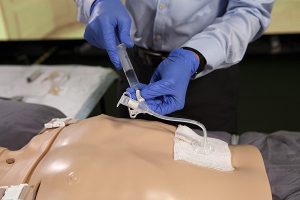
Gastrostomy tubes are used on patients who have difficulty with oral intake and/or need the tube to vent air or drainage from the stomach.
Gastrostomy tubes are used on patients who have difficulty with oral intake and/or need the tube to vent air or drainage from the stomach. These tubes are placed by gastroenterologists in a hospital setting but may need to be replaced after the patient returns home. Home-based primary care providers can help patients and their caregivers by replacing PEG tubes in the home vs. sending the patient back to the hospital for a lengthy and costly replacement procedure.
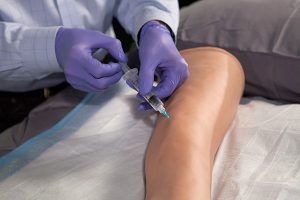
Knee joint aspiration is a procedure that removes excess fluid from the joint, while injection delivers medication to relieve pain.
Knee joint aspiration is a procedure that removes excess fluid from the joint, while injection delivers medication to relieve pain. This is a commonly performed medical procedure among elderly patients who are at a higher risk for arthritis. Home-based primary care providers can help these patients and their caregivers by performing this procedure during a home visit vs. sending the patient to an in-patient facility.
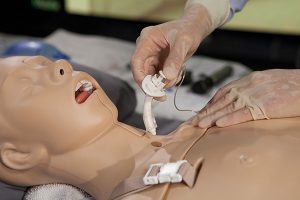
Tracheostomy tubes are used on patients who have a need to be on ventilators for more than a couple of weeks or who have conditions that block their upper airways.
Tracheostomy tubes are used on patients who have a need to be on ventilators for more than a couple of weeks or who have conditions that block their upper airways. These tubes are placed by doctors or emergency medical technicians in a hospital setting but may need to be replaced after the patient returns home. Home-based primary care providers can help these patients and their caregivers by replacing these tubes in the home vs. sending the patient back to the hospital for a lengthy and costly replacement procedure.

Chronic wounds can be a challenge for home-based primary care (HBPC) patients and may result in increased hospital admissions, lengths of stay, and higher healthcare costs.
Chronic wounds can be a challenge for home-based primary care (HBPC) patients and may result in increased hospital admissions, lengths of stay, and higher healthcare costs. Unfortunately, many HBPC practices do not have dedicated staff to assess and treat wounds in a consistent manner, often resulting in wound management challenges. In this on-demand course, you will learn valuable strategies that will help you determine the etiology of a wound, document it accurately, and initiate a comprehensive plan of care.
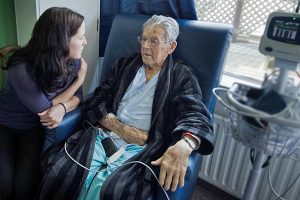
The home-based primary care (HBPC) patient population often presents with multiple chronic diseases, producing treatment challenges for providers.
The home-based primary care (HBPC) patient population often presents with multiple chronic diseases, producing treatment challenges for providers. In addition, psychiatric and functional issues can impact clinical care. Unfortunately, optimal guidelines for managing patients who are elderly, frail, and multi-complex do not exist, leaving providers with a lack of clear direction on how to approach treating these patients in the home. In this on-demand course, you will learn a model for treating these patients, as well as medication management considerations for four chronic diseases commonly present in homebound patients.

Nearly 20% of community-dwelling adults age 65 and older take ten or more different medications.
Nearly 20% of community-dwelling adults age 65 and older take ten or more different medications. HBPC providers face many challenges when managing the over- and under-prescribing of these medications. This on-demand course will describe the challenges faced by both HBPC providers and patients and explain the essential steps to manage medications in home-based patients.

HBPC providers often deliver primary care services to patients with various stages of dementia.
HBPC providers often deliver primary care services to patients with various stages of dementia. These patients often experience neuropsychiatric disturbances, making delivery of HBPC services challenging. This on-demand course will present strategies to effectively treat patients with dementia and neuropsychiatric disturbances and support their families and caregivers.

Each year 75,000 people die from healthcare-acquired infections.
Each year 75,000 people die from healthcare-acquired infections. Many of us know infection control is the first directive for all providers, but what you may not realize is that home-based primary care presents some unique infection risks. Precautions must be taken to prevent putting patients, family members, caregivers, and providers at risk for infection. This on-demand course will identify the risks associated with home-based care and review strategies that can be implemented before, during, and after a home visit to minimize the risk of infection.
Practice Operations and Leadership Courses

Caring for patients in their home gives a perspective not typically available in office-based or hospital settings and being able to competently leverage this enhanced understanding of patients and their families can lead to improved healthcare experiences.
Caring for patients in their home gives a perspective not typically available in office-based or hospital settings and being able to competently leverage this enhanced understanding of patients and their families can lead to improved healthcare experiences. Health systems are on the front lines of addressing health equity, but the topic is complex and multifaceted. Organizations need to be thoughtful in how they address patient cultural diversity and/or issues related to systemic inequity and exclusion. Leaders must be deliberate in designing and building systems where the outcomes truly advance health equity for all patients and families. In this on-demand course, you will discover the unique challenges and opportunities facing home-based care providers, including considerations of bias, cultural preferences, and family dynamics.
This course is provided at no cost with thanks to the Josiah Macy Jr. Foundation.

Clinicians, practice managers, and other staff interested in enhancing the productivity, and ultimately the bottom line, of their house call program need proven strategies to streamline operations while ensuring high-quality patient care is at the center of all activity.
Clinicians, practice managers, and other staff interested in enhancing the productivity, and ultimately the bottom line, of their house call program need proven strategies to streamline operations while ensuring high-quality patient care is at the center of all activity. In this on-demand course, you will learn the functions performed by the front office and back office within a house call program and the various types of professionals who perform them. You will identify people, processes, and technologies that can improve your operational workflow and explore resources and strategies for identifying and connecting with community services. You will review geographic scheduling and DME referral coordination strategies and options for diagnostic and operations technology to improve patient care, efficiency, and staff safety. You will also review the common urgent medical issues that arise in HBPC and discuss approaches to planning and preparing for urgent scenarios, as well as implementing and evaluating these strategies.

As a home-based primary care (HBPC) provider, if you’re working in a fee-for-service (FFS) model, you bill each time you provide a service without the opportunity to be paid on quality outcomes.
As a home-based primary care (HBPC) provider, if you’re working in a fee-for-service (FFS) model, you bill each time you provide a service without the opportunity to be paid on quality outcomes. Therefore, the financial resources to enhance your patients’ quality of life may be limited. Value-based payment arrangements are increasingly common in the care of homebound, medically complex patients, and the prevalence of payer contracts recognizing the value of HBPC has been a game changer. This on-demand course will help you demonstrate the value of HBPC when negotiating with payers to obtain necessary funding to be more supportive of your patients’ needs and to maintain financial sustainability for your practice.
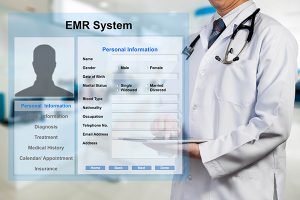
House call practices remain a focus of the Office of Inspector General and Centers for Medicare & Medicaid Services resulting in a higher likelihood of being audited.
House call practices remain a focus of the Office of Inspector General and Centers for Medicare & Medicaid Services resulting in a higher likelihood of being audited. This on-demand course explains “medical necessity,” describes required documentation components, and reviews billing and coding best practices so you can avoid common documentation errors and achieve positive audit outcomes.

House call practices face many challenges when trying to survive financially in our current fee-for-service world.
House call practices face many challenges when trying to survive financially in our current fee-for-service world. Chances are, your practice may not be taking full advantage of being reimbursed for the hard work done by providers, including many services beyond the standard evaluation and management (E/M) codes. This on-demand course will review in detail the requirements for Transitional Care Management, Chronic Care Management, Advance Care Planning, and Prolonged Services so you can feel confident when billing for these services in your practice.

Risk adjustment is becoming the payment structure of the future as more payers move towards this model of payment reform.
Risk adjustment is becoming the payment structure of the future as more payers move towards this model of payment reform. HCC (Hierarchical Condition Category) is determined by demographics, health status, and the diagnosis options selected. Providers and billers must understand how critical it is to document and code to the highest level of specificity possible. This on-demand course explains risk score calculations and will help you develop a workflow to assign HCC codes accurately.

The 65-plus population is the fastest growing in the United States, with the 85-plus age group projected to quadruple from 2000 to 2050. Many of these older patients are somewhat or completely homebound as a result of serious illness or chronic medical conditions.
The 65-plus population is the fastest growing in the United States, with the 85-plus age group projected to quadruple from 2000 to 2050. Many of these older patients are somewhat or completely homebound as a result of serious illness or chronic medical conditions. As a result, the need for home-based primary care (HBPriC) and home-based palliative care (HBPalC) is on the rise. HBPriC generally provides longitudinal primary care to medically complex patients who have difficulty accessing office-based care, while HBPalC typically focuses on symptom management and goals of care for homebound patients facing serious illness. Traditionally, these two models have operated separately. However, there has been an increased interest in, and need for, them to work more closely together. In this on-demand course, you will learn different approaches and recommended strategies for bringing together HBPriC and HBPalC to meet the growing needs of homebound patients with advanced illness and/or chronic conditions.

Caring for homebound patients with multiple comorbidities has many challenges that go above and beyond the normal scope of practice.
Caring for homebound patients with multiple comorbidities has many challenges that go above and beyond the normal scope of practice. Not only is disease management more complicated, but patients have many psychosocial challenges that need attention. Having an interdisciplinary home-based primary care (HBPC) team (versus a multidisciplinary team) impacts the care and resources you’re able to provide. This on-demand course explains the characteristics of the different teams, as well as the pros and cons for each so that you can apply best practice team strategies within your program.

Understanding compliance guidelines governed by the Office of Inspector General is challenging, but understanding how to overcome compliance challenges for the medically homebound can be even more complex.
Understanding compliance guidelines governed by the Office of Inspector General is challenging, but understanding how to overcome compliance challenges for the medically homebound can be even more complex. This on-demand course describes how compliance applies to the field of home-based primary care (HBPC), identifies the unique challenges faced by HBPC providers, and gives you the tools needed to establish a compliance program and guidelines to utilize in your practice.

Providing care in a patient’s home presents a unique array of safety risks, unlike a traditional outpatient setting.
Providing care in a patient’s home presents a unique array of safety risks, unlike a traditional outpatient setting. Understanding risks such as pets, weapons, travel complications, and weather are essential to being able to employ effective strategies for keeping house call providers safe. This on-demand course will describe how to minimize risks before, during, and after a home visit.

Telehealth is the integration of telecommunications into the practice of providing and promoting health.
Telehealth is the integration of telecommunications into the practice of providing and promoting health However, many home-based primary care practices have not yet implemented telehealth due to barriers such as a lack of provider experience using the technology or questions about coding and billing for these services. Telehealth encompasses both remote clinical and non-clinical services such as surveillance, health promotion, and public health functions. This on-demand course will focus on two main areas of telehealth: Virtual Visits (typically referred to as Telemedicine) and Remote Patient Monitoring.
Early Career Courses

Through video vignettes, this course depicts – from beginning to end – a provider’s home visit with Ruben, an 81-year-old widower, and his daughter and caregiver, Marina.
Through video vignettes, this course depicts – from beginning to end – a provider’s home visit with Ruben, an 81-year-old widower, and his daughter and caregiver, Marina. The course includes guidance on everything from knowing what to observe upon arrival; conducting the physical exam, fall risk assessment, and medication management; doing a “walk-through” of the home and the patient’s access to nutrition; discussing advance care planning; supporting the caregiver and recognizing burnout; and bringing the visit to a close. In this on-demand course, you will learn best practices for conducting a house call, including steps before, during, and after each home visit, as well as strategies for effectively communicating with patients and caregivers regarding diagnoses, recommended treatment(s), patient preferences, and goals of care.

Home-based primary care (HBPC)—or the modern-day house call—is a viable, innovative solution for high need/high-cost patients who are medically complex and homebound or home-limited.
Home-based primary care (HBPC)—or the modern-day house call—is a viable, innovative solution for high need/high-cost patients who are medically complex and homebound or home-limited. However, primary care providers who are considering HBPC as a career choice may not fully appreciate the value of practicing in a home-based setting, nor be familiar with proven strategies for success in this field. In this on-demand course, you will have the unique opportunity to follow an HBPC provider and her medical assistant on a simulated house call, helping you understand typical steps taken before, during, and after a home visit, as well as characteristics and personal qualities that can enhance a provider’s success in HBPC.
Accreditation and Credit Designation Statements
These activities have been planned and implemented in accordance with the accreditation requirements and policies of the Accreditation Council for Continuing Medical Education (ACCME) through the joint providership of PeerPoint Medical Education Institute, LLC and the Home Centered Care Institute. PeerPoint Medical Education Institute, LLC is accredited by the ACCME to provide continuing medical education for physicians.
PeerPoint Medical Education Institute, LLC designates these enduring material activities for the number of AMA PRA Category 1 Credits™ shown below. Physicians should claim only the credit commensurate with the extent of their participation in the activity.
See individual activity for accreditation expiration dates.
The following organizations accept certificates of participation for educational activities certified for AMA PRA Category 1 Credit™:
- Physician Assistants: American Academy of Physician Assistants (AAPA)
- Nurse Practitioners: American Academy of Nurse Practitioners Certification Program (AANPCP)
- Nurses: American Nurses Credentialing Center (ANCC)
- Practice Managers: Medical Group Management Association (MGMA)